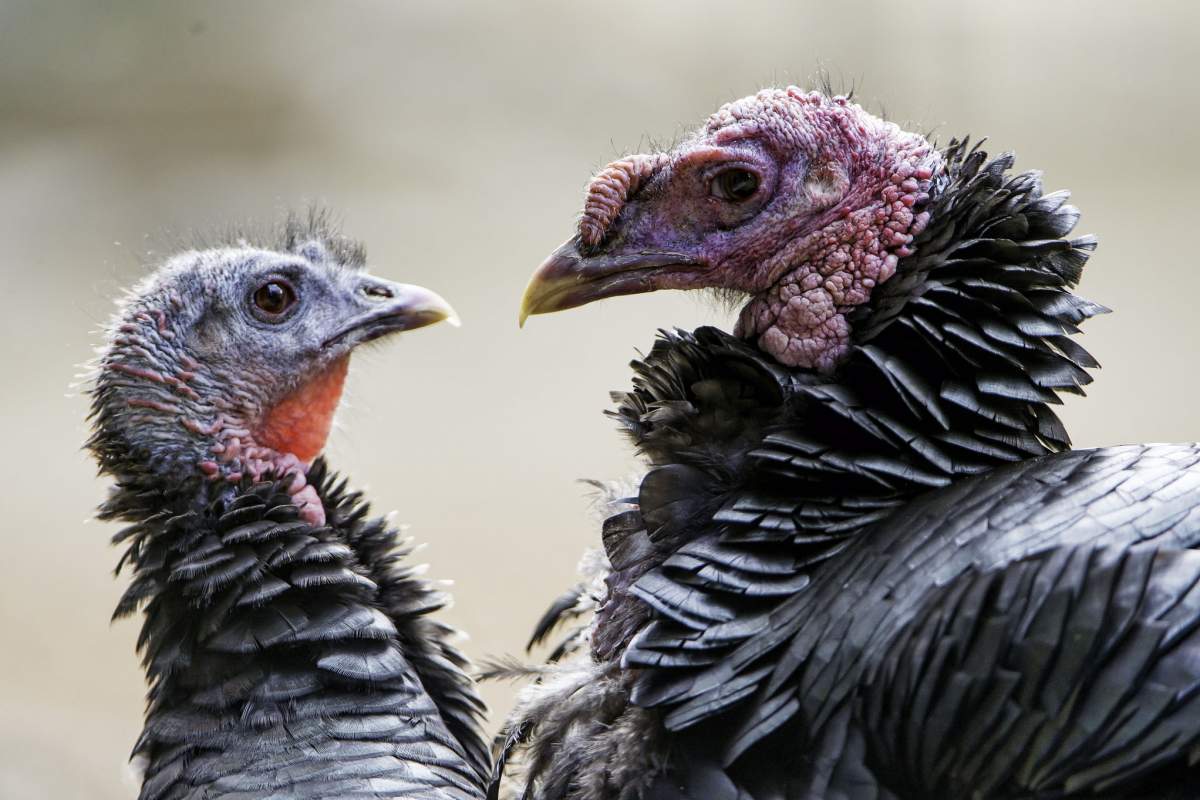
You probably already know that turkeys engage in courtship behavior. They blush and fan their tails and strut around while emitting a low drumming noise. It's really something.
And it's attractive if you're a female turkey. And if you're a female turkey, you're also probably checking out the size of the male turkey's snood.
And sometimes, to really seal the deal, male turkey siblings pair up and pool their courtship resources.
Wingman With The Wings
The more dominant turkey goes after the female, while the subordinate turkey acts as a wingman, by acting like a backup dancer and keeping the other males away.
This behavior is an example of the evolutionary principle of kin selection. In other words, you do something that might not benefit you as an individual, but benefits your kin group as a whole.
Kin Selection
According to a one study, when you sit down and do the numbers, kin selection can really pay off. Turkeys that courted on their own produced, on average, less than one offspring over the course of the study.
In comparison, the dominant turkey in each courtship pair produced, on average, seven offspring over the same time span. Since the subordinate turkey shares genes with the dominant turkey, this means that without doing any actual copulating, the subordinate turkey gets his genes into the equivalent of more than one and a half offspring when he supports his more dominant brother.
Sources And Further Reading:
- Kraukauer, AH. "Kin selection and cooperative courtship in wild turkeys." Nature. 2005 Mar 3;434(7029):69-72. DOI: 10.1038/nature03325
- Sanders, Robert. "In the mating game, male wild turkeys benefit even when they don't get the girl." UCBerkeley News. March 2, 2005. Re-accessed for this re-run on April 4, 2018.









